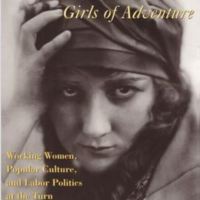Resistance to Reform
Dublin Core
Title
Resistance to Reform
Description
In "Ladies of Labor, Girls of Adventure," Nan Enstad reveals how working women—the shop girls who caused CWC members great concern—created a distinct culture expressed through fashion and consumption of popular amusements. This working class identity challenged middle class notions of propriety and respectability. The Day Book asserts the autonomy and capability of these working girls, contrasting them with clubwomen characterized as rich and nosy.
Women and children also attacked the industrious homes and beautification projects sponsored by the Chicago Woman’s Club. The Chicago Tribune reported an act of vandalism against the Woman’s Industrial Home by a former inmate while the 1901 Report of the Art and Literature Department vividly describes frequent community assaults on a fountain maintained by the Chicago Woman’s Club.
Women and children also attacked the industrious homes and beautification projects sponsored by the Chicago Woman’s Club. The Chicago Tribune reported an act of vandalism against the Woman’s Industrial Home by a former inmate while the 1901 Report of the Art and Literature Department vividly describes frequent community assaults on a fountain maintained by the Chicago Woman’s Club.
Source
Enstad, Nan. Ladies of Labor, Girls of Adventure: Working Women, Popular Culture, and Labor Politics at the Turn of the Twentieth Century. Columbia University Press, 1999.
Newspaper: Chicago Daily Tribune (1872-1922).
Minutes: Chicago Woman’s Club Records, Chicago History Museum.
Newspaper: The Day Book. (Chicago, Ill.), 21 March 1912. Chronicling America: Historic American Newspapers. Lib. of Congress. <http://chroniclingamerica.loc.gov/lccn/sn83045487/1912-03-21/ed-1/seq-1/>
Citation
“Resistance to Reform,” Loyola University Chicago Digital Special Collections, accessed September 3, 2025, http://www.lib.luc.edu/specialcollections/items/show/923.

